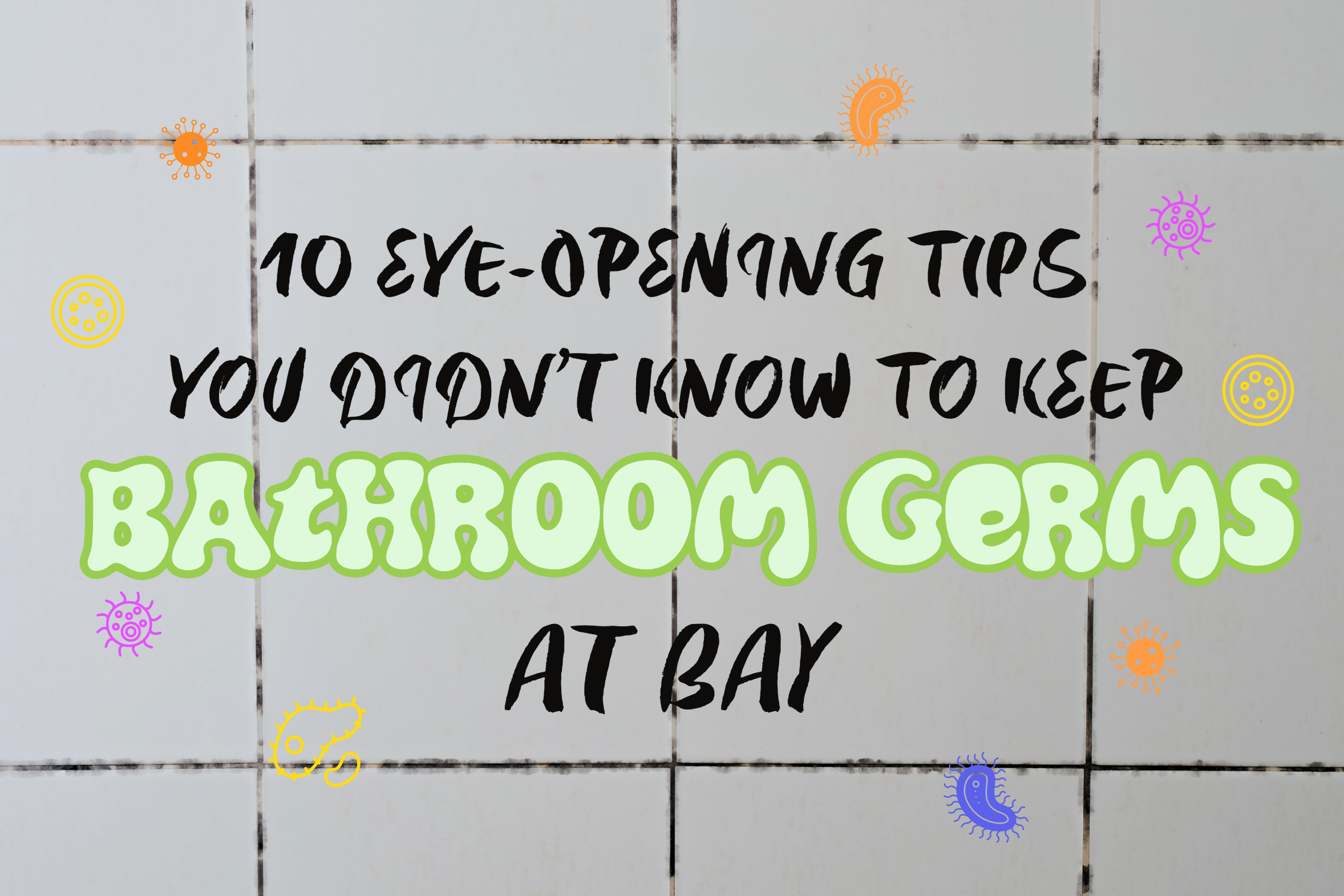Bathrooms are well-known for harboring germs due to moisture, bacteria, and other microbes. In other words, (unsurprisingly) bathrooms are the ideal breeding ground for germs. Moreover, there are spots in your bathroom that you may not have considered in your bathroom cleaning routine. Today, join us as your trustworthy Lebanon Plumbing & Drain professionals share ten practical tips to keep bathroom germs in check. By promoting better hygiene practices and sanitary habits, you can help boost your bathroom hygiene and keep those very unwelcome bacteria at bay!
Germiest Areas in Your Bathroom:
Before we get started with our tips, let’s identify the areas in your bathroom that are most prone to germs. These areas include:
- The toilet seat & handle
- The sink faucets & handles
- The shower curtain & bath mats
- The towels & washcloths
- The countertops & and other surfaces
Types of Bacteria Found in Bathrooms:
Now, let’s discuss the bacteria most commonly found in bathrooms.
- E. coli
- Staphylococcus
- Salmonella
- Influenza virus
- Norovirus
10 Eye-Opening Tips to Keep Bathroom Germs at Bay:
1. Handwashing
- We all know that proper handwashing is crucial. But did you know that the CDC guidelines for effective handwashing suggest at least 20 seconds of thorough handwashing to prevent the spread of germs? So, if you haven’t already, try to get everyone in your household on board with this handwashing hack.
2. Bathroom Cleaning
- It’s probably safe to say that, for the most part, many of us do not enjoy cleaning the bathroom. If you can relate to this and often put it off until you can’t anymore, try setting a specific day each week for cleaning your bathrooms if you haven’t already. Having a routine for thorough bathroom cleaning will help you stay on track and ensure it gets done.
- Another great tip is to keep antibacterial wipes handy. Using wipes for quick and easy disinfecting helps prevent the spread of germs between regular cleaning sessions.
3. Toothbrushes:
- Store toothbrushes with covers. Doing this will help prevent airborne bacteria from landing on toothbrushes, as it is crucial for maintaining oral hygiene. Factors such as proximity to the toilet, aerosolized particles when flushing, and contact with hands can contribute to bacterial contamination, so keeping them covered is your best option.
4. Toilet Flushing:
- To minimize the spread of bacteria from the toilet, simply close the toilet lid before flushing. This helps contain bacteria and prevents the dispersion of airborne particles from the toilet around the bathroom. If you can get everyone in your home to get into the habit of always flushing with the lid closed, it’s a great step in the right direction to lessen the amount of germs in your bathroom.
5. Touchless Faucets:
- If you think about it, a lot of contamination comes from touching different surfaces. This even includes your faucets when you go to wash your hands. You can reduce surface touching by using hands-free faucets with motion-activated sensors. This helps minimize the risk of cross-contamination through surface contact.
6. Disinfect Toilet Brushes:
- Toilet brushes naturally hold all the icky germs and bacteria we dont want lingering around. Believe it or not – you should clean your toilet brush after each use. Better yet, if you have a toilet brush with disposable ends, that’s a great option! If not, just aim to clean the brush after every use. Do this by pouring hot water and bleach directly over the bristles (and straight into the toilet bowl so germs don’t spread). Then, to air dry it, prop the handle of the toilet brush in between the toilet bowl and toilet seat lid with the brush toward the bowl. It may seem like an extra unnecessary step, but it definitely aids in reducing bacteria in your bathroom.
7. Shower Curtains:
- Since shower curtains repeatedly contain moisture, it’s easy for mold to build up, thus making it the perfect spot for bacteria and other microbes. To prevent this from happening, change your shower curtain regularly. You can also utilize a washable curtain so that it can simply be rewashed instead of thrown away.
8. Bidets:
- Bidets are a thorough and hygienic alternative. They offer a cleaner option than traditional toilet paper, reducing the risk of spreading germs through hand contact. Plus, they are reasonably priced and easy to install yourself!
9. Bathroom Ventilation:
- Next, you should always ensure your bathroom is adequately ventilated after each use. Proper ventilation, such as exhaust fans or open windows, helps reduce moisture, creating an environment less favorable for bacterial growth.
10. Professional Drain Cleaning:
- Household drains can become breeding grounds for bacteria due to the buildup of organic matter, soap scum, and debris. To prevent bacterial and mold growth, it is recommended to schedule professional drain cleaning every 1-2 years. This helps maintain a healthy plumbing system, preventing clogs and unwanted bacteria. For more information, feel free to give us a call.
Incorporating these tips into your routine will help you achieve fewer germs in your bathroom and greatly reduce the chances of spreading bacteria. Maintaining good bathroom hygiene is crucial for overall health, cleanliness at home, and even an efficiently functioning plumbing system.
Call Lebanon Plumbing & Drain today at (513) 427- 2443, or schedule an appointment online now by clicking here!




